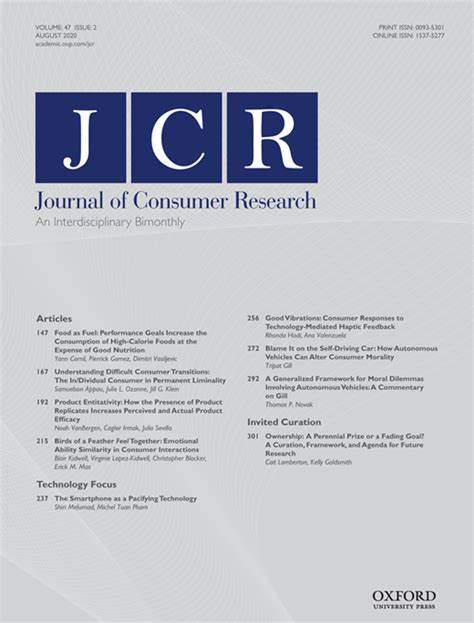数字认知如何解释模糊厌恶感
IF 6.4
1区 管理学
Q1 BUSINESS
引用次数: 0
摘要
与预期值相同的不精确范围相比,消费者通常更喜欢精确的概率或结果,这种偏差被称为 "模糊厌恶"。我们认为,数字认知的两个基本原理可以解释这种偏差的巨大异质性,它们影响着消费者在许多领域的选择,这些领域的特点是具有不同程度的不确定性(如彩票、折扣、投资产品、疫苗等)。第一个原理是 "压缩效应",即消费者的心理数字线在数字量级越大时越容易被压缩。单凭这一点就足以预测模糊厌恶,因为它会使中点(如 40 美元)与下限(如 20 美元)相比,被认为更接近范围的上限(如 60 美元)。此外,由于压缩效应会扭曲心理数字线,尤其是在数字较小的情况下,因此在数字较大的情况下,模糊厌恶程度应该会降低。第二个原理,即 "左数效应 "会导致一个范围的相对吸引力随着其下限(上限)的每一次左数转换而不成比例地减少(增加),从而增加(减少)模糊厌恶。由于整体的压缩效应,左数效应的影响在数字越大时就越大。我们展示了 34 个实验(N = 10634),以支持该理论的预测和广泛适用性。本文章由计算机程序翻译,如有差异,请以英文原文为准。
How Numerical Cognition Explains Ambiguity Aversion
Consumers generally prefer precise probabilities or outcomes over imprecise ranges with the same expected value, a bias known as ‘ambiguity aversion.’ We argue that two elementary principles of numerical cognition explain great heterogeneity in this bias, affecting consumer choices in many domains where options are characterized by varying levels of uncertainty (e.g., lotteries, discounts, investment products, vaccines, etc). The first principle, the ‘compression effect,’ stipulates that consumers’ mental number lines are increasingly compressed at greater number magnitudes. This alone suffices to predict ambiguity aversion as it causes a midpoint (e.g., $40) to be perceived as closer to the upper bound of a range (e.g., $60) compared to its lower bound (e.g., $20). Furthermore, as the compression effect distorts the mental number line especially at lower numbers, it follows that ambiguity aversion should decrease around greater numbers. The second principle, the ‘left-digit effect’ causes a range’s relative attractiveness to decrease (increase) disproportionately with every left-digit transition in its lower (upper) bound, thus increasing (decreasing) ambiguity aversion. Due to the overall compression effect, the impact of the left-digit effect increases at greater numbers. We present 34 experiments (N = 10634), to support the theory’s predictions and wide applicability.
求助全文
通过发布文献求助,成功后即可免费获取论文全文。
去求助
来源期刊

Journal of Consumer Research
BUSINESS-
CiteScore
12.00
自引率
9.70%
发文量
53
期刊介绍:
Journal of Consumer Research, established in 1974, is a reputable journal that publishes high-quality empirical, theoretical, and methodological papers on a wide range of consumer research topics. The primary objective of JCR is to contribute to the advancement of understanding consumer behavior and the practice of consumer research.
To be considered for publication in JCR, a paper must make a significant contribution to the existing body of knowledge in consumer research. It should aim to build upon, deepen, or challenge previous studies in the field of consumption, while providing both conceptual and empirical evidence to support its findings.
JCR prioritizes multidisciplinary perspectives, encouraging contributions from various disciplines, methodological approaches, theoretical frameworks, and substantive problem areas. The journal aims to cater to a diverse readership base by welcoming articles derived from different orientations and paradigms.
Overall, JCR is a valuable platform for scholars and researchers to share their work and contribute to the advancement of consumer research.
 求助内容:
求助内容: 应助结果提醒方式:
应助结果提醒方式:


